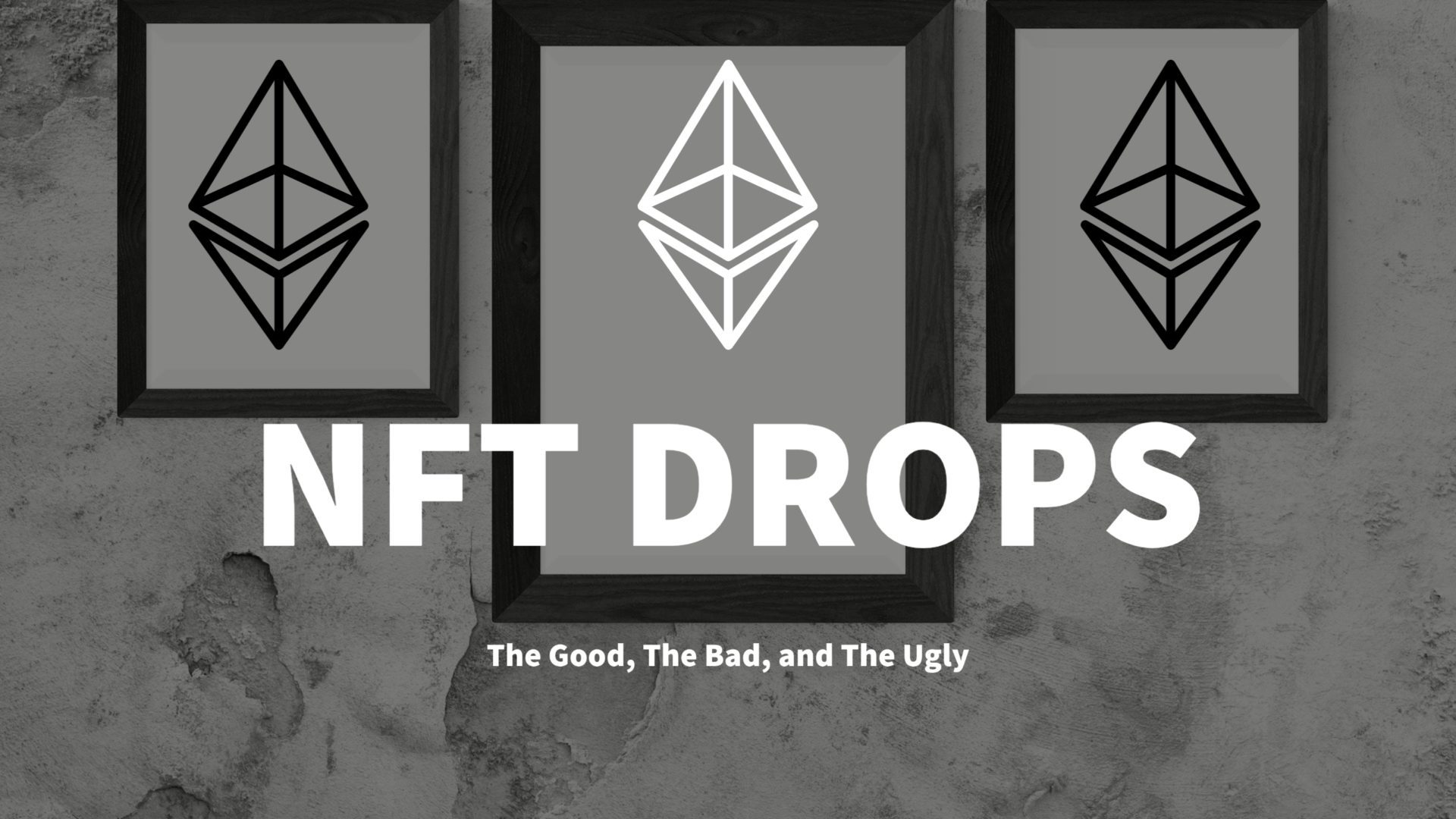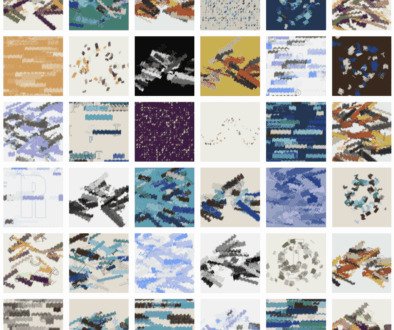NFT Drops: The Good Bad and Ugly
In this article, we are going to try to look at the economics and human behavior when a piece of artwork is released via different types of constraint mechanisms. Constraints can be on the supply side of the equation, such as a limited series drop, where the size of the drop is artificially limited to X units, such as 10. More nuanced is the demand side of the equation, where tricks are performed to reduce the demand of the item (the obvious approach here is just increasing the price). Tricks could be to alter the time of the drop to something unusual like weekend mornings, or enforce a lock-up period after the fact.
The $1 No Limit NFT
This is just a hypothetical thought experiment of what would happen if an artist released a work for a minimal price and made it perpetually available for purchase.
How Supply is Constrained: N/A
How Demand is Constrained: N/A
The Good: Everyone gets a copy!
Cons: Everyone gets a copy!
Our Take: This approach is a bad one: Artists have different reasons for creating art, but an important aspect to art creation, at least as far as serious work goes, is that it is a profession for the artist. Making a difference in your profession is very important, but everyone deserves the chance to make a difference and make a living. Many artists do not have significant levels of reach, and critically underpricing the art would result in unlivable wages for the artist.
The Limited NFT Series
How Supply is Constrained: the literal size of the edition – only X buyers can purchase
How Demand is Constrained: a specific price for the edition – only willing people with X in funds can be a buyer
The Good: The limited series allows the artist some degree of control over configuring the price and quantity, in order to capture some net quantity of funds to cover either their living expenses in creating the work or living expenses while they create their next work. Limited series are also good for the collector and even the investor in art, because the artificial restriction in supply makes it scarce and ownership of the art itself can be a source of bragging rights. Skilled tuning of supply and demand of this approach can conceivably maximize capture of the market for the work.
Cons:
- The Artist is artificially messing with the overall size of the market, and might completely misjudging it, resulting in what might be a stain on the Artist’s career.
- Art is in the eye of the beholder, and it is hard to predict the appeal of artwork prior to bringing it to market. A throwaway work might have huge appeal, while what you might perceive as your magnum opus might end up being a flop, or worse be offensive or revolting to your audience in some less-than-obvious way.
- Additionally, the supply limitation means that you are deliberately undeserving your audience which isn’t a super customer-focused approach, and also might decrease the impact of the work on society.
- The Artist is trusting that the supply is going to be received by faithful consumers and not actors with non-ideal intents, such as botters or flippers. A work that merely serves as a way to enrich middlemen is certainly not one that makes a significant impact on society.
Our Take: This approach is the default in the art world, and is probably the most widely used approach for NFTs. It “works” but also comes with big drawbacks. So, we must innovate.
The NFT Auction
and
The Silent Auction
Another tried-and-true approach, the auction/silent auction are alternative ways to maximize gross proceeds per work released. The primary difference between an auction and a limited series (imagine just a limited series of 1) is simply that the hypothetical slider on the demand curve is reduced to one single buyer via the auction mechanism.
How Supply is Constrained: Supply is 1 unit.
How Demand is Constrained: Only 1 buyer is capable and willing to buy the unit.
The Good: The artist’s upper limit / ceiling of value is proven out by releasing the work. Presumably, the artist will be adequately compensated for their time and effort. The buyer has an extremely scarce work.
Cons:
- Where the limited series deliberately underserves the artist’s audience, the auction completely takes this to the extreme.
- This approach heavily biases in favor of the most well resourced member of the audience. There is a high risk to alienation using this approach.
- The Artist must trust that the ultimate price does in fact meet their minimum expectation. Again, the artist is artificially manipulating the size of the market, and it’s easy to make a bad mistake.
- The reach of the piece is minimized (and therefore so is the impact), for the sake of revealing a somewhat meaningless statistic of maximum price / work.
Our Take: This approach is widely used in the art world, and for that reason, we admit that it “works”. Again, the drawbacks are large. Our recommendation is to use this sparingly or avoid it all together.
The NFT Open Edition Release
The open release removes the supply side constraint. A “pure” realization of this approach would be to allow perpetual creation of new editions with no limitation, while a more conservative realization is to gate the release to within a set timeframe.
How Supply Is Constrained: N/A
How Demand Is Constrained: Primarily by price – only willing people with X in funds can be a buyer.
The Good: This approach allows for an artist to flesh out the size of the market in a less error prone fashion, by only needing to consider one variable in the supply and demand equation. This means the artist is more likely to realize the full market for their work, and they will be more enabled to make their living. Another big pro of this approach is that presumably the price chosen will enable more buyers than the auction or the limited series, and thus more of the artist’s audience is able to own the work, which improves the reach and impact of the work.
Cons:
- Unlimiting supply risks devaluing the Artist’s body of work as a whole.
- (or Pro?) This reduces the perception of the work as an asset, which reduces the likelihood that buyers with non-ideal intents (botters or flippers) will consume the work. It’s a pro if you seek to maximize reach but a con if you seek to maximize market size.
Our Take: As artists and art-enthusiasts, this is probably our favorite approach to releasing art at the moment. We primarily value impact of art works, and secondarily value capture of market, to enable art as a profession. The trade offs of this approach favor these values the most.
The Lottery System
The lottery system uses some method of registration for consideration in the release of the work, combined with a presumably randomized selection algorithm.
The Lottery System isn’t as much a system on its own, as it is a reduction step for any system in which the supply is being constrained artificially.
How Supply is Constrained: Either a limited series approach, or a single unit approach is in play.
How Demand is Constrained: Demand is constrained twice, once by reducing to the number of willing buyers at X price, and second by a random selection to match supply.
The Good: This approach is an attempt to provide a limited series at a quantity far below what the market demands at a specific price, which conceivably indicates to the artist’s audience that concessions are being made to appease populist sentiments. The approach can also conceivably reduce the impact of non-ideal intent buyers by requiring heavy handed registration procedures.
Cons:
- Once again, the approach deliberately underserves the audience, thus artificially reducing the impact of the work.
- The reduction in non-ideal buyers is only as good as the registration procedures.
- A botter / flipper is actually perversely incentivized to game the lottery system because the artist is literally saying up front that the market is deliberately not being met, and therefore the work is going to be worth more than its initial price.
Our Take: In our opinion, the cons of this system vastly outweigh the pros. It perversely only provides a greater incentive to botters and flippers, and for that reason we recommend against it.
In the future, we plan on providing some insight into other real world approaches to releasing work into markets with limited supply or demand.
Have a request for a drop type that you would like us to take into consideration? Please drop a comment in the comment box below!

